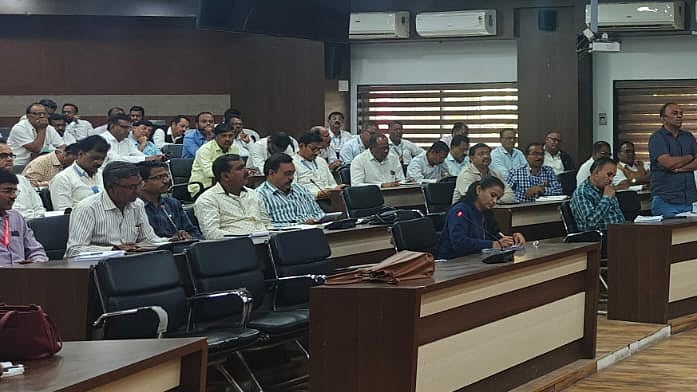While the village of Dhumalwadi in Satara district, has earned the title of the 'fruit village' of the state, the district's favorable natural environment, fertile land, and rainfall, depending on the east-west division, have created ideal conditions for fruit cultivation. As a result, around 40 types of fruits are being harvested on approximately 7,000 hectares across the district, with grapes and pomegranates being exported to several countries. This has propelled Satara district into the spotlight as it emerges as a 'fruit district' at both the state and national levels, according to government statistics.
The western talukas of Patan, Mahabaleshwar, Javali, and Wai receive over 5,000 millimeters of rainfall from June to September, while the eastern talukas of Maan, Khatav, and Phaltan receive less rainfall but benefit from fertile lands along riverbanks, which support numerous fruit orchards. At present, 40 different types of fruits are grown in Satara, with pomegranates covering the largest orchard area, followed by other fruits such as mangoes, custard apples, and guavas. This varied environment has led to farmers flourishing through orchard farming. Agro-tourism has also gained momentum, particularly in drought-prone areas, while strawberry tourism thrives in Mahabaleshwar.
Fruit crops' hectors
According to official government figures, the thriving fruit sector in district spans approximately 7,000 hectares, showcasing a diverse range of 40 fruit types. The area dedicated to specific fruits includes 618 hectares of grapes, 1,400 hectares of pomegranates, 1,486 hectares of mangoes, 690 hectares of custard apples, 450 hectares of guavas, 68 hectares of paper lemons, 227 hectares of chikus, 151 hectares of coconuts and 42 hectares of amlas. Additionally, 20 hectares are devoted to jackfruits, 82 hectares to tamarinds, 19 hectares to figs, and smaller areas are used for oranges, sweet limes, apples, bananas, papayas, dragon fruits, strawberries, watermelons, raspberries, gooseberries, blueberries, mulberries, and dates.
The diversity of fruit cultivation and inter-cropping in these orchards, combined with efficient water use through drip irrigation, has created a sustainable income source for farmers. These orchards have not only provided daily employment to locals but have also helped curb migration for work. The tourism sector linked to these orchards has continued to grow, and with the expansion of fruit cultivation, more employment opportunities for the educated youth in the area are expected, ultimately raising the standard of living in the region.










